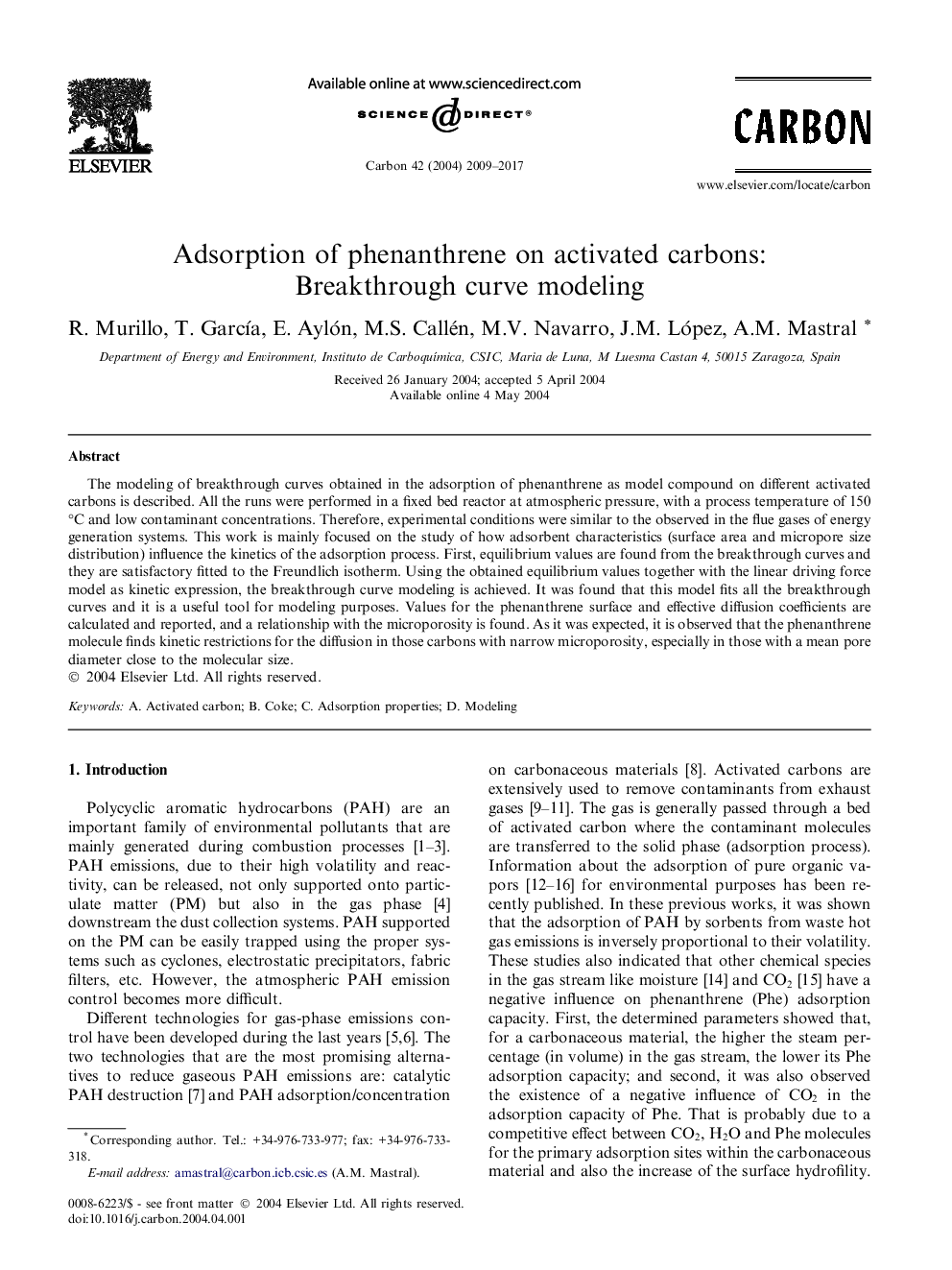| Article ID | Journal | Published Year | Pages | File Type |
|---|---|---|---|---|
| 1419357 | Carbon | 2017 | 9 Pages |
The modeling of breakthrough curves obtained in the adsorption of phenanthrene as model compound on different activated carbons is described. All the runs were performed in a fixed bed reactor at atmospheric pressure, with a process temperature of 150 °C and low contaminant concentrations. Therefore, experimental conditions were similar to the observed in the flue gases of energy generation systems. This work is mainly focused on the study of how adsorbent characteristics (surface area and micropore size distribution) influence the kinetics of the adsorption process. First, equilibrium values are found from the breakthrough curves and they are satisfactory fitted to the Freundlich isotherm. Using the obtained equilibrium values together with the linear driving force model as kinetic expression, the breakthrough curve modeling is achieved. It was found that this model fits all the breakthrough curves and it is a useful tool for modeling purposes. Values for the phenanthrene surface and effective diffusion coefficients are calculated and reported, and a relationship with the microporosity is found. As it was expected, it is observed that the phenanthrene molecule finds kinetic restrictions for the diffusion in those carbons with narrow microporosity, especially in those with a mean pore diameter close to the molecular size.
